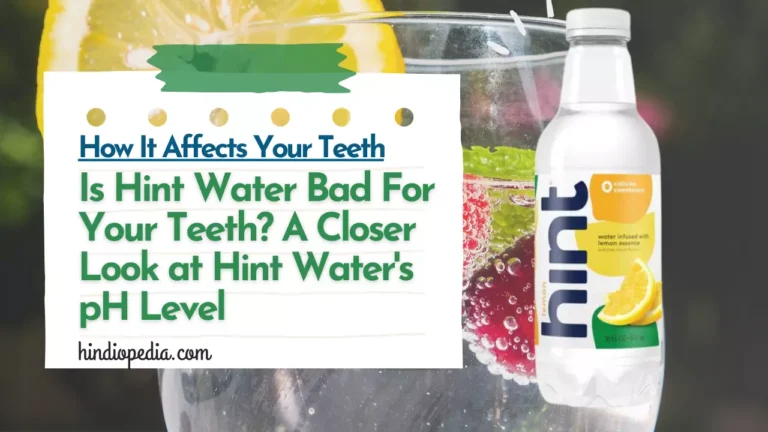Smoking vs Vaping: Which is Safer? The Answer Will Surprise You!
Smoking and vaping are hot topics. Many debate their health effects. This article explores what science says. We’ll compare vaping and smoking. We’ll look at their impacts on health. Our focus is on current research. We’ll present facts, not opinions. Let’s explore this important issue.

What is Smoking?
Smoking involves burning tobacco. It produces smoke. People inhale this smoke. Cigarettes are the most common form. Cigars and pipes are also used. Tobacco contains nicotine. Nicotine is addictive. Smoking has a long history. It dates back centuries.
Health Impacts of Smoking
Smoking harms nearly every organ. It causes many diseases. Here are key impacts:
- Lung Cancer: Smoking is the leading cause. It accounts for 80-90% of lung cancer deaths [1].
- Heart Disease: Smokers have a higher risk. It can lead to heart attacks and strokes [2].
- COPD: This includes emphysema and chronic bronchitis. Smoking is the primary cause [3].
- Other Cancers: Smoking increases risk for many cancers. These include mouth, throat, and bladder cancer [4].
- Pregnancy Complications: Smoking can cause low birth weight. It increases risk of premature birth [5].
- Secondhand Smoke: This harms non-smokers. It can cause respiratory problems and heart disease [6].
Table 1: Key Health Impacts of Smoking
| Health Impact | Risk Increase |
|---|---|
| Lung Cancer | 15-30 times |
| Heart Disease | 2-4 times |
| COPD | 12-13 times |
| Stroke | 2-4 times |
Source: Centers for Disease Control and Prevention [7]
What is Vaping?
Vaping uses electronic devices. These heat a liquid. The liquid becomes an aerosol. People inhale this aerosol. E-cigarettes are the most common. Vape pens and mods are also used. The liquid often contains nicotine. It also has flavorings and other chemicals.
Health Impacts of Vaping
Vaping is newer than smoking. Long-term effects are less known. Here’s what current research shows:
- Lung Injury: Vaping can cause lung damage. EVALI (e-cigarette or vaping product use-associated lung injury) is a concern [8].
- Cardiovascular Effects: Vaping may increase heart disease risk. It can affect blood pressure and heart rate [9].
- Addiction: E-cigarettes contain nicotine. Nicotine is highly addictive. This is especially concerning for young users [10].
- Gateway to Smoking: Some studies suggest vaping leads to smoking. This is debated among researchers [11].
- Toxin Exposure: E-cigarette aerosol contains harmful substances. These include ultrafine particles and heavy metals [12].
- Unknown Long-term Effects: Vaping is relatively new. Long-term health impacts are still being studied [13].
Table 2: Comparison of Known Health Risks
| Health Risk | Smoking | Vaping |
|---|---|---|
| Cancer Risk | High | Lower |
| Cardiovascular Risk | High | Lower |
| Lung Damage | High | Lower |
| Addiction Potential | High | High |
Note: “Lower” does not mean “safe”. It means less risk compared to smoking based on current evidence.
Comparing Vaping and Smoking
Both have health risks. Here’s how they compare:
- Harmful Chemicals: Cigarette smoke contains 7,000+ chemicals. Many are toxic. E-cigarette aerosol has fewer chemicals. But it’s not harmless [14].
- Cancer Risk: Smoking is a major cancer cause. Vaping’s cancer risk is likely lower. But it’s not zero [15].
- Cardiovascular Health: Both affect the heart. Smoking’s impact is more severe. Vaping’s long-term effects are unclear [16].
- Respiratory Health: Smoking severely damages lungs. Vaping can also harm lungs. The extent is still being studied [17].
- Secondhand Exposure: Secondhand smoke is very harmful. E-cigarette aerosol may pose risks. But it’s likely less harmful than cigarette smoke [18].
- Addiction: Both deliver nicotine. Both can be highly addictive. E-cigarettes can deliver more nicotine than traditional cigarettes [19].
What Experts Say
Experts have varying views. Here are some key points:
- Public Health England: They state vaping is 95% less harmful than smoking. This claim is debated [20].
- World Health Organization: WHO warns that e-cigarettes are harmful. They’re not safe alternatives to cigarettes [21].
- American Heart Association: They acknowledge vaping may help some quit smoking. But they warn of potential health risks [22].
- Centers for Disease Control and Prevention: CDC emphasizes that e-cigarettes are not safe for youth, young adults, pregnant women, or non-smokers [23].
Regulatory Landscape
Regulations vary globally. Here’s a brief overview:
- United States: FDA regulates e-cigarettes as tobacco products. They’ve banned flavored cartridge-based e-cigarettes [28].
- European Union: The EU has strict regulations. These include nicotine strength limits and health warnings [29].
- United Kingdom: The UK has a more positive stance on vaping. They see it as a tool to help smokers quit [30].
- Australia: E-cigarettes containing nicotine are largely banned. Non-nicotine e-cigarettes are legal [31].
The Bottom Line
Vaping and smoking both pose health risks. Smoking’s dangers are well-documented. Vaping’s long-term effects are less clear. Current evidence suggests vaping is less harmful than smoking. But it’s not safe. Non-smokers shouldn’t start vaping. Smokers considering vaping should consult healthcare providers. More research is needed. The debate continues. Stay informed about new findings.
References
[1] American Cancer Society. “Health Risks of Smoking Tobacco.” 2020.
[2] Centers for Disease Control and Prevention. “Smoking and Heart Disease and Stroke.” 2021.
[3] National Heart, Lung, and Blood Institute. “COPD.” 2022.
[4] National Cancer Institute. “Harms of Cigarette Smoking and Health Benefits of Quitting.” 2021.
[5] Centers for Disease Control and Prevention. “Smoking During Pregnancy.” 2022.
[6] U.S. Department of Health and Human Services. “The Health Consequences of Involuntary Exposure to Tobacco Smoke.” 2006.
[7] Centers for Disease Control and Prevention. “Health Effects of Cigarette Smoking.” 2022.
[8] Centers for Disease Control and Prevention. “Outbreak of Lung Injury Associated with E-cigarette Use, or Vaping.” 2020.
[9] Buchanan, N.D., et al. “Cardiovascular risk of electronic cigarettes: a review.” American Journal of Medicine, 2020.
[10] U.S. Surgeon General. “E-cigarette Use Among Youth and Young Adults.” 2016.
[11] Soneji, S., et al. “Association Between Initial Use of e-Cigarettes and Subsequent Cigarette Smoking Among Adolescents and Young Adults.” JAMA Pediatrics, 2017.
[12] National Academies of Sciences, Engineering, and Medicine. “Public Health Consequences of E-Cigarettes.” 2018.
[13] Gotts, J.E., et al. “What are the respiratory effects of e-cigarettes?” BMJ, 2019.
[14] Goniewicz, M.L., et al. “Comparison of Nicotine and Toxicant Exposure in Users of Electronic Cigarettes and Combustible Cigarettes.” JAMA Network Open, 2018.
[15] Stephens, W.E. “Comparing the cancer potencies of emissions from vapourised nicotine products including e-cigarettes with those of tobacco smoke.” Tobacco Control, 2018.
[16] Benowitz, N.L., and Fraiman, J.B. “Cardiovascular effects of electronic cigarettes.” Nature Reviews Cardiology, 2017.
[17] Chun, L.F., et al. “Pulmonary toxicity of e-cigarettes.” American Journal of Physiology-Lung Cellular and Molecular Physiology, 2017.
[18] Hess, I.M.R., et al. “E-cigarettes: A new threat to bystanders.” Medicine Today, 2016.
[19] Hajek, P., et al. “Nicotine delivery to users from cigarettes and from different types of e-cigarettes.” Psychopharmacology, 2017.
[20] Public Health England. “E-cigarettes: an evidence update.” 2015.
[21] World Health Organization. “E-cigarettes.” 2020.
[22] American Heart Association. “The Impact of E-Cigarettes on the Heart.” 2020.
[23] Centers for Disease Control and Prevention. “About Electronic Cigarettes (E-Cigarettes).” 2022.
[24] Shahab, L., et al. “Nicotine, Carcinogen, and Toxin Exposure in Long-Term E-Cigarette and Nicotine Replacement Therapy Users.” Annals of Internal Medicine, 2017.
[25] Yuan, M., et al. “Nicotine and the adolescent brain.” Journal of Physiology, 2015.
[26] Hartmann-Boyce, J., et al. “Electronic cigarettes for smoking cessation.” Cochrane Database of Systematic Reviews, 2021.
[27] Talih, S., et al. “Effects of user puff topography, device voltage, and liquid nicotine concentration on electronic cigarette nicotine yield: measurements and model predictions.” Nicotine & Tobacco Research, 2015.
[28] U.S. Food and Drug Administration. “FDA finalizes enforcement policy on unauthorized flavored cartridge-based e-cigarettes.” 2020.
[29] European Commission. “Electronic cigarettes.” 2022.
[30] McNeill, A., et al. “Evidence review of e-cigarettes and heated tobacco products 2018.” Public Health England, 2018.
[31] Australian Government Department of Health. “E-cigarettes.” 2022.






